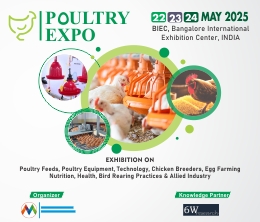Kenya Plant Extracts Market (2024-2030) | Value, Outlook, Forecast, Share, Industry, Analysis, Revenue, Size, Companies, Trends & Growth
| Product Code: ETC009970 | Publication Date: Oct 2020 | Updated Date: May 2024 | Product Type: Report | |
| Publisher: 6Wresearch | No. of Pages: 70 | No. of Figures: 35 | No. of Tables: 5 | |
Kenya Plant Extracts Market Competition 2023
Kenya Plant Extracts market currently, in 2023, has witnessed an HHI of 6177, Which has decreased substantially as compared to the HHI of 10000 in 2017. The market is moving towards Highly concentrated. Herfindahl index measures the competitiveness of exporting countries. The range lies from 0 to 10000, where a lower index number represents a larger number of players or exporting countries in the market while a large index number means fewer numbers of players or countries exporting in the market.
Kenya Export Potential Assessment For Plant Extracts Market (Values in USD Thousand)
Kenya Plant Extracts Market Overview
The plant extracts market in Kenya is expanding as demand for natural and organic products rises across various industries, including food and beverages, pharmaceuticals, and cosmetics. Plant extracts are valued for their medicinal properties, flavoring, and nutritional benefits. The market is supported by Kenya rich biodiversity, providing a wide range of raw materials for extraction. However, challenges include maintaining consistent quality, ensuring sustainable sourcing, and competing with synthetic alternatives.
Drivers of the market
The plant extracts market in Kenya is driven by the growing demand for natural and herbal products in pharmaceuticals, cosmetics, and food and beverages, fueled by consumer preferences for organic and sustainable ingredients.
Challenges of the market
The plant extracts market in Kenya faces significant hurdles due to limited technological advancements and insufficient infrastructure for large-scale extraction and processing. High production costs, driven by the need for imported equipment and raw materials, make it difficult for local producers to compete with international suppliers. Additionally, there is a lack of regulatory frameworks and quality standards, which hampers market trust and growth. Inconsistent supply chains and seasonal variations in raw material availability further challenge market stability.
Government Policy of the market
The plant extracts market in Kenya faces various challenges. High production costs and limited availability of quality raw materials drive up prices. There is also limited awareness and understanding of the benefits and applications of plant extracts among potential users. The market is constrained by inadequate local manufacturing capabilities and reliance on imports, which can lead to supply chain vulnerabilities. Additionally, regulatory challenges and the need for compliance with international quality standards add complexity to the market.
Key Highlights of the Report:
- Kenya Plant Extracts Market Outlook
- Market Size of Kenya Plant Extracts Market, 2023
- Forecast of Kenya Plant Extracts Market, 2026
- Historical Data and Forecast of Kenya Plant Extracts Revenues & Volume for the Period 2020 - 2030
- Kenya Plant Extracts Market Trend Evolution
- Kenya Plant Extracts Market Drivers and Challenges
- Kenya Plant Extracts Price Trends
- Kenya Plant Extracts Porter's Five Forces
- Kenya Plant Extracts Industry Life Cycle
- Historical Data and Forecast of Kenya Plant Extracts Market Revenues & Volume By Product Type for the Period 2020 - 2030
- Historical Data and Forecast of Kenya Plant Extracts Market Revenues & Volume By Spices for the Period 2020 - 2030
- Historical Data and Forecast of Kenya Plant Extracts Market Revenues & Volume By Essential oils for the Period 2020 - 2030
- Historical Data and Forecast of Kenya Plant Extracts Market Revenues & Volume By Flavors & fragrances for the Period 2020 - 2030
- Historical Data and Forecast of Kenya Plant Extracts Market Revenues & Volume By Phytomedicines & herbal extracts for the Period 2020 - 2030
- Historical Data and Forecast of Kenya Plant Extracts Market Revenues & Volume By Applications for the Period 2020 - 2030
- Historical Data and Forecast of Kenya Plant Extracts Market Revenues & Volume By Pharmaceuticals & dietary supplements for the Period 2020 - 2030
- Historical Data and Forecast of Kenya Plant Extracts Market Revenues & Volume By Food & beverages for the Period 2020 - 2030
- Historical Data and Forecast of Kenya Plant Extracts Market Revenues & Volume By Cosmetics for the Period 2020 - 2030
- Historical Data and Forecast of Kenya Plant Extracts Market Revenues & Volume By Others? for the Period 2020 - 2030
- Historical Data and Forecast of Kenya Plant Extracts Market Revenues & Volume By Source Types for the Period 2020 - 2030
- Historical Data and Forecast of Kenya Plant Extracts Market Revenues & Volume By Leaves for the Period 2020 - 2030
- Historical Data and Forecast of Kenya Plant Extracts Market Revenues & Volume By Fruits, Flowers, and Bulbs for the Period 2020 - 2030
- Historical Data and Forecast of Kenya Plant Extracts Market Revenues & Volume By Rhizomes & roots?? for the Period 2020 - 2030
- Historical Data and Forecast of Kenya Plant Extracts Market Revenues & Volume By Barks & stems for the Period 2020 - 2030
- Historical Data and Forecast of Kenya Plant Extracts Market Revenues & Volume By Others? for the Period 2020 - 2030
- Kenya Plant Extracts Import Export Trade Statistics
- Market Opportunity Assessment By Product Type
- Market Opportunity Assessment By Applications
- Market Opportunity Assessment By Source Types
- Kenya Plant Extracts Top Companies Market Share
- Kenya Plant Extracts Competitive Benchmarking By Technical and Operational Parameters
- Kenya Plant Extracts Company Profiles
- Kenya Plant Extracts Key Strategic Recommendations
Frequently Asked Questions About the Market Study (FAQs):
1 Executive Summary |
2 Introduction |
2.1 Key Highlights of the Report |
2.2 Report Description |
2.3 Market Scope & Segmentation |
2.4 Research Methodology |
2.5 Assumptions |
3 Kenya Plant Extracts Market Overview |
3.1 Kenya Country Macro Economic Indicators |
3.2 Kenya Plant Extracts Market Revenues & Volume, 2019 & 2026F |
3.3 Kenya Plant Extracts Market - Industry Life Cycle |
3.4 Kenya Plant Extracts Market - Porter's Five Forces |
3.5 Kenya Plant Extracts Market Revenues & Volume Share, By Product Type, 2019 & 2026F |
3.6 Kenya Plant Extracts Market Revenues & Volume Share, By Applications, 2019 & 2026F |
3.7 Kenya Plant Extracts Market Revenues & Volume Share, By Source Types, 2019 & 2026F |
4 Kenya Plant Extracts Market Dynamics |
4.1 Impact Analysis |
4.2 Market Drivers |
4.3 Market Restraints |
5 Kenya Plant Extracts Market Trends |
6 Kenya Plant Extracts Market, By Types |
6.1 Kenya Plant Extracts Market, By Product Type |
6.1.1 Overview and Analysis |
6.1.2 Kenya Plant Extracts Market Revenues & Volume, By Product Type, 2016 - 2026F |
6.1.3 Kenya Plant Extracts Market Revenues & Volume, By Spices, 2016 - 2026F |
6.1.4 Kenya Plant Extracts Market Revenues & Volume, By Essential oils, 2016 - 2026F |
6.1.5 Kenya Plant Extracts Market Revenues & Volume, By Flavors & fragrances, 2016 - 2026F |
6.1.6 Kenya Plant Extracts Market Revenues & Volume, By Phytomedicines & herbal extracts, 2016 - 2026F |
6.2 Kenya Plant Extracts Market, By Applications |
6.2.1 Overview and Analysis |
6.2.2 Kenya Plant Extracts Market Revenues & Volume, By Pharmaceuticals & dietary supplements, 2016 - 2026F |
6.2.3 Kenya Plant Extracts Market Revenues & Volume, By Food & beverages, 2016 - 2026F |
6.2.4 Kenya Plant Extracts Market Revenues & Volume, By Cosmetics, 2016 - 2026F |
6.2.5 Kenya Plant Extracts Market Revenues & Volume, By Others , 2016 - 2026F |
6.3 Kenya Plant Extracts Market, By Source Types |
6.3.1 Overview and Analysis |
6.3.2 Kenya Plant Extracts Market Revenues & Volume, By Leaves, 2016 - 2026F |
6.3.3 Kenya Plant Extracts Market Revenues & Volume, By Fruits, Flowers, and Bulbs, 2016 - 2026F |
6.3.4 Kenya Plant Extracts Market Revenues & Volume, By Rhizomes & roots , 2016 - 2026F |
6.3.5 Kenya Plant Extracts Market Revenues & Volume, By Barks & stems, 2016 - 2026F |
6.3.6 Kenya Plant Extracts Market Revenues & Volume, By Others , 2016 - 2026F |
7 Kenya Plant Extracts Market Import-Export Trade Statistics |
7.1 Kenya Plant Extracts Market Export to Major Countries |
7.2 Kenya Plant Extracts Market Imports from Major Countries |
8 Kenya Plant Extracts Market Key Performance Indicators |
9 Kenya Plant Extracts Market - Opportunity Assessment |
9.1 Kenya Plant Extracts Market Opportunity Assessment, By Product Type, 2019 & 2026F |
9.2 Kenya Plant Extracts Market Opportunity Assessment, By Applications, 2019 & 2026F |
9.3 Kenya Plant Extracts Market Opportunity Assessment, By Source Types, 2019 & 2026F |
10 Kenya Plant Extracts Market - Competitive Landscape |
10.1 Kenya Plant Extracts Market Revenue Share, By Companies, 2023 |
10.2 Kenya Plant Extracts Market Competitive Benchmarking, By Operating and Technical Parameters |
11 Company Profiles |
12 Recommendations |
13 Disclaimer |
- Single User License$ 1,995
- Department License$ 2,400
- Site License$ 3,120
- Global License$ 3,795
Search
Related Reports
- Germany Genset Rental Market (2025-2031) | Analysis, Share, Industry, Growth, Revenue, Companies, Trends, Outlook, Forecast, Value & Size
- Ethiopia Genset Rental Market (2025-2031) | Trends, Analysis, Companies, Revenue, Size, Forecast, Value, Outlook, Growth, Industry & Share
- Kenya Genset Rental Market (2025-2031) | Growth, Revenue, Value, Share, Trends, Forecast, Outlook, Companies, Industry, Size & Analysis
- South Africa 800kW and Above Gas Engine for Generators Market (2025-2031) | Size, Share, Value, Industry, Companies, Trends, Analysis, Outlook, Revenue, Growth & Forecast
- South Africa Emergency and Exit Lighting Systems Market (2025-2031) | Trend, Size, Share, Growth, Revenue, Analysis & Outlook
- Turkey Emergency and Exit Lighting Systems Market (2025-2031) | Size, Share, Growth, Forecast, Revenue, industry, Analysis & Outlook
- Thailand Electric Vehicle Charging Infrastructure Market (2025-2031) | Share, industry, Growth, Revenue, Forecast, Outlook & Outlook
- United Kingdom Genset Rental Market (2025-2031) | Revenue, Companies, Forecast, Trends, Value, Size, Growth, Share, Outlook, Analysis & Industry
- South Africa Genset Rental Market (2025-2031) | Trends, Outlook, Companies, Growth, Revenue, Industry, Size, Forecast, Value, Analysis & Share
- Latin America Plastics Processing Machinery Market (2025-2031) | Industry, Segmentation, Share, Analysis, Forecast, Companies, Outlook, Competitive Landscape, Trends, Value, Growth, Size & Revenue
Industry Events and Analyst Meet
Our Clients
Whitepaper
- Middle East & Africa Commercial Security Market Click here to view more.
- Middle East & Africa Fire Safety Systems & Equipment Market Click here to view more.
- GCC Drone Market Click here to view more.
- Middle East Lighting Fixture Market Click here to view more.
- GCC Physical & Perimeter Security Market Click here to view more.
6WResearch In News
- India's Printer Market Faces 20.7% Decline in Q4 2023: Epson and HP Lead Amidst Downturn
- India's Camera Market Sees 8.9% Decline in Q4 2023; Canon Leads with 38.4% Share
- Doha a strategic location for EV manufacturing hub: IPA Qatar
- Demand for luxury TVs surging in the GCC, says Samsung
- Empowering Growth: The Thriving Journey of Bangladesh’s Cable Industry
- The future of gaming industry in the Philippines













